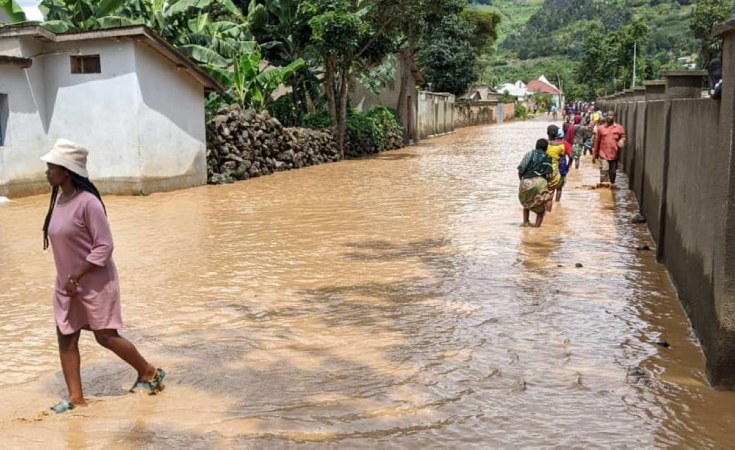Rwanda has joined 10 regional countries to establish new water level monitoring stations on rivers and lakes. The aim is to ensure early warning, build flood-resilient infrastructure, and plan efficient use of shared water resources in the Nile River Basin.
The Nile River Basin, the part of Africa drained by the Nile River and its tributaries, encompasses the river's catchment area in Rwanda, Burundi, Tanzania, Ethiopia, Sudan, Egypt, Uganda, DR Congo, Eritrea, and Kenya.
Rwanda is in the far southwest of the Nile Basin with abundant water resources, totaling some five billion cubic metres.
In order to plan and efficiently utilise the water resources and monitor floods, the countries are installing water level monitoring stations on rivers and lakes under the Nile Basin Initiative -- a partnership between the riparian states of the River Nile aimed to foster cooperative development and management of the shared water resources.
"In Rwanda, under the initiative, we have installed six hydrological monitoring stations in zones located in the Nile Basin. They help us to collect data on the quantity of water and water levels we have in lakes and rivers," Remy Norbert Duhuze, the Manager of the Water Monitoring and Quality Control Division at the Rwanda Water Resources Board (RWB) said.
The stations were handed over to Rwanda for operation on November 16.
Equipped with wave sensors, the monitors effectively communicate fluctuations in water levels every five minutes. The water level and rainfall sensors are equipped with SIM cards, enabling the automatic transmission of real-time data to a central database or server which bolsters flood prediction capabilities.
Duhuze said that the acquired data helps the country in planning for projects.
"The projects include crop irrigation, electricity generation, early warning in case of flooding, and building resilient infrastructure. This is possible when they already know the quantity and level of water recorded during rain and dry season."
The six stations were installed on rivers and lakes with transboundary significance; the rivers of Nyabarongo, Akagera, Akanyaru, Muvumba, in addition to Cyohoha and Rweru lakes which are connected to the Nile River through different countries. Rwanda is a distant source of the River Nile.
"The water monitors will be a network in Nile Basin countries. Others were installed in Burundi, Kenya, Tanzania, Sudan, South Sudan, Uganda, and others. The network will help us to share information on what is going on in the Nile Basin region," Duhuze said.
The stations will also support water quality and sediment monitoring in several rivers that fall within the Nile River Basin in the country.
These hydrometer stations will provide real-time data and more reliable information to improve water resources planning and management both at national and regional levels. They will enable better flood and drought disaster preparedness, monitoring of surface water quality and sediment transport, coordinated management of water storage dams, navigation, and improved adaptation to climate change," reiterated Jacqueline Nyirakamana, the Transboundary Water Resources Cooperation Specialist at the Ministry of Environment.
Status of installation in Nile Basin countries
According to Florence Grace Adongo, the Executive Director of Nile Basin Initiative, the stations were also installed in other Nile equatorial lakes countries - Burundi, DR Congo, Kenya, Rwanda, Tanzania, and Uganda as well as in the eastern Nile countries. Over 80 stations are expected.
The installation and testing of the stations were completed for 41 stations with the support of the countries' national hydrological monitoring team. There are two in Burundi, six in Kenya, six in Rwanda, five in South Sudan, two in Sudan, eight in Tanzania, and four in Uganda.
Adongo said that security and other challenges in DR Congo, Sudan, and Ethiopia hindered the project's implementation.
The installed water monitoring systems in the countries are part of climate change adaptation projects which Africa is pushing for financing as priorities at the 28th UN climate conference (COP28) from November 30 to December 12.


